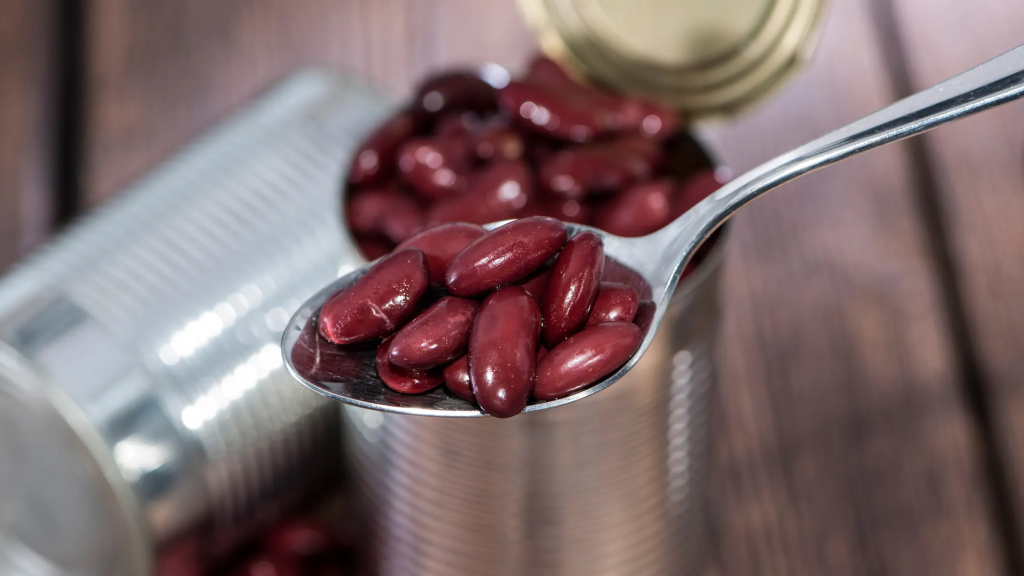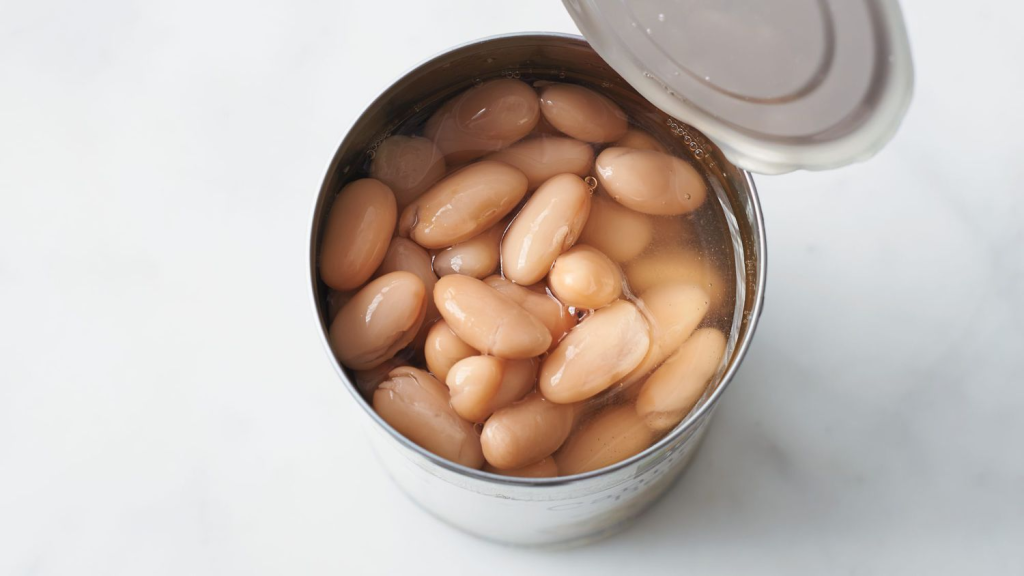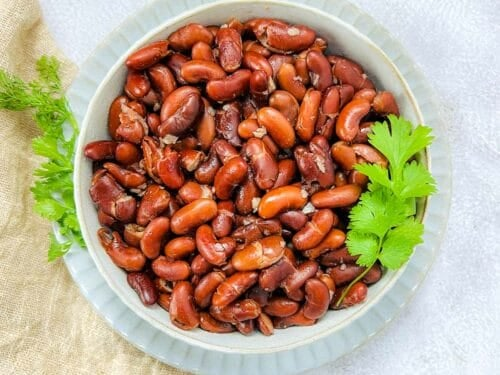Canned beans are a kitchen staple for many of us. They’re convenient, affordable, and packed with protein, fiber, and essential nutrients. Whether you’re whipping up a quick chili, tossing together a hearty salad, or making a comforting soup, canned beans often find their way into the mix.
But one question continues to divide home cooks and food enthusiasts alike: Should you rinse canned beans before cooking? Some swear by rinsing to remove excess salt and improve flavor, while others argue it’s unnecessary because the beans are already pre-cooked and safe to eat. Let’s break down the science and see if we can put this debate to rest.

Understanding the Canning Process: How Are Canned Beans Made?
To understand whether rinsing is necessary, we first need to look at how canned beans are processed. The canning process involves cooking the beans and sealing them in airtight containers with a liquid—often water, brine, or even a seasoned sauce. The sealed cans are then heated to destroy any microorganisms, ensuring the beans remain safe to eat and shelf-stable for long periods.
While this process makes canned beans convenient and safe, it also results in some issues that prompt people to consider rinsing. The liquid inside the can often contains added salt and preservatives to maintain flavor and extend shelf life. It may also pick up starches from the beans, leading to a thicker, sometimes slimy texture.
So, while canned beans are technically ready to eat straight from the can, the liquid itself becomes a point of contention.
Video: The Biggest Mistakes Everyone Makes With Canned Beans
Nutritional Content of Canned Beans: Is the Liquid the Problem?
One of the biggest reasons people rinse canned beans is to reduce sodium intake. Canned beans often contain a significant amount of salt, which helps preserve flavor and texture. However, for those watching their sodium levels, this can be problematic.
Here’s the good news: Rinsing canned beans can reduce sodium content by up to 40%. This reduction can be significant, especially if you’re preparing dishes where saltiness might overpower other flavors.
The liquid can also contain sugars or additives, especially if the beans are in a seasoned sauce. For those looking to minimize processed ingredients, rinsing can help reduce these unwanted extras. On the flip side, some of the beans’ nutrients, like water-soluble vitamins and minerals, may also leach into the liquid during canning. So, rinsing could mean losing a small portion of these nutrients.
Safety Concerns: Are Canned Beans Safe Without Rinsing?
From a food safety perspective, canned beans are entirely safe to eat without rinsing. The canning process itself eliminates harmful bacteria and makes the beans shelf-stable. That said, some people worry about preservatives or potential metallic tastes from the can lining.
While the liquid itself is not harmful, it can sometimes have a slightly metallic or briny taste that doesn’t pair well with all dishes. For instance, adding unrinsed beans to a delicate salad might result in an overpowering flavor. On the other hand, in robust dishes like chili, the liquid’s flavor might not be as noticeable.
Why Some People Choose Not to Rinse

Those against rinsing argue that the canning liquid enhances flavor and adds body to dishes. In soups and stews, the starchy liquid can help thicken the broth, creating a richer texture. Some chefs intentionally use the liquid to add depth, especially when making bean-based sauces or dips.
Additionally, rinsing can slightly alter the texture of the beans. Some varieties may become drier or lose their creamy consistency. If you’re aiming for a thicker, heartier dish, keeping the liquid might be preferable.
Expert Opinions: What Do Food Professionals Say?
Experts tend to fall on both sides of the debate. Many nutritionists advocate for rinsing to reduce sodium, particularly for those with high blood pressure or heart conditions. They emphasize that while the difference might seem small, every bit counts when managing chronic health issues.
Chefs, however, often prioritize flavor and texture. They may skip rinsing when making robust dishes like chili or bean soup, where the liquid’s thickness and saltiness complement the other ingredients. In contrast, when preparing salads or cold dishes, even chefs often recommend rinsing to avoid any slimy texture or excess saltiness.
Best Practices for Cooking with Canned Beans

To strike a balance, consider the dish you’re preparing. If you’re making a hearty stew or soup, keeping the liquid might enhance the dish’s body and flavor. For lighter, fresher recipes like salads or tacos, rinsing can improve the beans’ texture and reduce the salty taste.
Here’s a simple guide:
- For soups and stews, keep the liquid if you want extra thickness.
- For salads or cold dishes, rinse to maintain a clean, fresh flavor.
- For dips and spreads, it’s a matter of personal preference—some like the added texture, while others prefer a smoother consistency.
To rinse properly, place the beans in a colander and run cold water over them for about 30 seconds. Gently shake the colander to ensure all the beans are evenly rinsed. Allow them to drain thoroughly before using.
The Middle Ground: When to Rinse and When to Skip It
The decision ultimately comes down to your health goals and flavor preferences. If reducing sodium is a priority, rinsing is the way to go. If you’re making a rich, flavorful dish where a bit of salt enhances the overall taste, skipping the rinse might be just fine.
If you’re still unsure, consider buying low-sodium or no-salt-added canned beans. This way, you can skip rinsing without worrying about excess sodium. Alternatively, you can experiment with both methods and see which one works best for your favorite recipes.
Conclusion: Balancing Convenience, Flavor, and Health

In the end, whether you choose to rinse canned beans or not largely depends on the dish you’re making and your personal dietary needs. While rinsing can reduce sodium and improve texture for some dishes, keeping the liquid might boost flavor and richness in others.
Finding a balance between convenience, flavor, and health is key. By understanding both sides of the debate, you can make an informed choice that suits your cooking style and nutritional goals. Next time you crack open a can of beans, you’ll know exactly how to get the most out of them—rinsed or not


